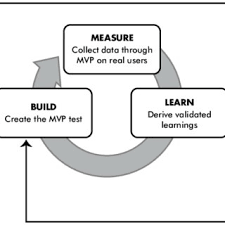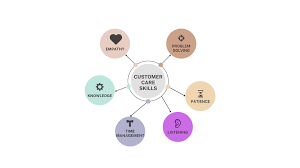The essence of the CustDev interview can be described by a phrase from the book “Ask Mom”: “No one is obliged to tell you the truth. You yourself must find out.” Let’s figure out how to learn to do this.
What is CustDev
How and why to conduct Customer Development
Types of interviews
Advantages and disadvantages of the approach
Basic principles of CustDev
Stages of conducting CustDev research
How to organize an interview
Expert advice
What is CustDev
Table of Contents
The Customer Development (CD) approach was developed by entrepreneur and scientist Steve Blank based on his experience. The principle of the approach is that the main asset of the company is considered to be consumers – clients, and not the product that the company produces. Relationships with clients are more important than product development.
Read Also:Boost Your Analysis with rdatao – The Ultimate Tool
How and why to conduct Customer Development
The customer development method allows you to find out exactly what potential customers want to see in a service or service. For example, a company launches an app for pregnant women. The long way is to spend the budget and time to create a product, launch it, invest in marketing, and then analyze reviews and download statistics in Google Play and the App Store. The quick way is to find out directly whether such a product is needed on the market “right now”. The CustDev interview method with pregnant girls helps to find out what apps they use and what functions are important to them.
After each stage of the custom development, insights appear on how to improve the product or service. Ideas can be recorded during the interview in a special table.
CustDev helps to divide the potential audience of the product into segments. The ABCDX segmentation , which its author Ilya Krasinsky used in the FRII Accelerator, can be used as a basis :
Loyal customers from the “A” segment pay for the product because they need it. Representatives of “B” regularly have various objections, but they buy the product. “C” also buy, but ask more questions. “D” has the same resistance. But this segment ultimately does not buy at all. But “X” are potential “A”, but the current product is categorically not suitable for them: for them to buy, you need to introduce a lot of new things.
Accordingly, when working on the product, the company will focus on segments “A”, “X” and “B” – these people are already buying or are ready to buy. This means that the feedback they give is a priority.
Types of interviews
Within CustDev, three types of interviews are conducted:
1. Problem interviews
help to understand the needs of the audience and understand their motives for buying. The goal of such an interview is to get the interviewee to talk, so you need to prepare open-ended questions for it. The wording: “When you were looking for a psychologist, the service gave too many search options. Was it difficult to navigate such a large number of specialists?” already suggests the answer the interviewer wants to get. The question: “Tell us, what did you focus on when choosing a psychologist?” helps to hear the respondent.
2. Decisional interviews
help to understand whether the client is ready to buy a product or order a service when they appear on the market. The task is not to sell, but to hear the real opinion of the respondent. Let’s say a startup is developing an app for the delivery of ready-made food. It is important for the interviewer to immerse the person in the product, for this he:
1.● articulates the customer’s need by asking, “How often do you order food?” to understand the context;
3.● notes what the customer does when ordering food: “What difficulties and problems do you face when ordering?” to find out what factors influence the choice of delivery;
4.● asks about competitors: “Where did you last order?” and “Where else do you usually order food?” to clarify what features are missing in the products the person already uses.
3. UX tests
help to check the usability, functionality and user satisfaction level from using the product. Testing is carried out in real conditions. This allows you to identify possible problems and improve the user experience. For example, an online school wants to understand how convenient it is for students to take a course. The interviewer calls the respondent, turns on the screen sharing and provides access to the course. The UX test participant starts the video, follows the links and presses the buttons. And the one conducting the test observes and reminds to say out loud: “What do you see now? What are you doing now?” and similar formulations. If the test reveals, for example, that a person does not understand where to upload homework, you need to emphasize this: put a banner with this information on the main page in the personal account.
You can figure out how to properly conduct CustDev interviews and how to analyze them later on the course “Internet Marketer” . Mentors – practicing marketers, experts from Yandex, Sber, Tinkoff – help you master the basic tools for working in different areas. After completing the course, you can add up to 20 projects to your portfolio.
Advantages and disadvantages of the approach
✅ CustDev Advantages
Helps to understand customer needs
CustDev allows you to delve into the deep needs and problems of customers. This helps to develop products and services that meet their expectations.
Reduces risks at launch
The CustDev methodology allows you to test hypotheses using feedback from potential customers at an early stage of development. This reduces the risk of errors and ensures successful implementation on the market.
Increases sales conversions
Interviews assist you more precisely characterize your target gathering of people and create showcasing methodologies pointed at drawing in and holding clients. In the event that the item meets the customer’s desires, deals are likely to extend.
❌ Disadvantages of CustDev
Requires a lot of resources
Implementation of the methodology requires costs. Market research and obtaining feedback from customers can be a lengthy process.
Limited sample
If there are few customer reviews, it will not be possible to correctly evaluate the results of the study.
Subjectivity of assessment
Often decisions are made based on subjective assessments. This is influenced by distortions of perception, personal preferences or implicit biases of respondents.
Basic principles of CustDev
The principles of the methodology can be summarized into five main points:
1. The desire to understand the customer’s needs
It is important to remember what problem the researcher is trying to solve: what was the hypothesis and what task he set. For example, a developer wants to add video calling to a scheduling app. To find out if the consumer needs it, he needs to ask open-ended questions without trying to lead to the right answer. “What services do you use for video calls?”, not “Do we need a new feature in our app?”
2. A clear sequence of experiments
CustDev research is based on conducting quick experiments to evaluate hypotheses about the product and its potential in the market. You can conduct not a series of interviews, but a quick survey to find out whether users need this functionality, and get feedback within a couple of days.
3. Feedback
It is important to communicate with customers regularly, collect and analyze feedback to find out what works in the product and what needs to be improved. For example, think up a series of letters for a monthly email newsletter – call new customers on a regular basis every month and find out if they liked the product they bought.
4. Iterative
CustDev involves retesting and re-checking hypotheses to improve the product and its compliance with customer needs. For example, a company found out that users of a pregnancy app need a family account. We launch this subscription, test it for a month or two, and conduct a second CustDev.
5. Focus on the client
The main goal of Customer Development is to create a product that meets the client’s needs.
Stages of conducting CustDev research
CustDev is carried out in three stages: formulating hypotheses; selecting segments – this part includes preparing questions and the interviews themselves; the final stage with analysis of results and systematization of data.
1. Formulate a hypothesis and a specific research task
For example, for the product “online consultations with a physical therapy trainer for children”, which is launched from scratch, the hypothesis will be: “Parents whose children need surgery due to scoliosis or foot problems come to the physical therapy trainer”. Now it is important to formulate the task precisely:
❌ The task is too vague
Finding an audience, analyzing competitors, choosing marketing positioning – in one castdev it will not be possible to research everything at once .
✅ A task that can be worked on
Finding parents who have had more than five meetings with a physical therapy trainer over the past year is a specific task in order to learn the path from awareness of “pain” to purchase .
2. Find respondents
The main task is to find respondents with the required experience.
❌ Inappropriate audience
Future parents; parents who are just planning to contact a physical therapy trainer.
✅ The right people
Mothers, fathers, grandmothers, grandfathers and other significant adults in the child’s life who learned that their son/daughter or grandson/granddaughter has scoliosis and completed a course with a trainer.
3. Analyze the results
Understand how to use the obtained data in the current product. It is worth writing down the conclusions for different segments.
❌ Too general a conclusion
All parents who have faced the need to perform surgery on their children due to scoliosis are our target audience.
✅ Conclusion that will help improve the product
Segment 1
Parents whose children were diagnosed with scoliosis at a doctor’s appointment and advised to do exercise therapy, completed X sessions with a trainer and achieved results. Now they want to maintain this condition.
Solution
Once every 3 months, offer to undergo control testing with a trainer and select new exercises.
How it will look in the product
SMS mailing with a reminder that it is time to pass the control testing.
Read Also:Comcast Business Solutions for Your Company
How to organize an interview
There are several rules that an interviewer should keep in mind when organizing a casting interview.
1. Formulate who is needed for the study and start searching
The more accurate and detailed the respondent’s portrait is, the easier it is to find people for casting. For example, look for those who hired a contractor company to renovate an apartment and signed a contract with it.
Or in more detail: we need CEOs and top managers of companies (100+ people) who hired coaches or purchased efficiency training for employees.
Respondents are sought through publications on social networks and company blogs, or a marketing agency is hired to conduct such research.
2. Decide on the interview format
Think through all the details. Will the meetings be held offline or online? If offline, where exactly – coworking, coffee shop, office? At what time? Will the interviews be paid?
To schedule an online interview, you can use the Calendly service and its analogues – in such applications, you can specify free dates and times. The researcher sends respondents a link to the page. If necessary, the meeting will be immediately duplicated in the calendar.
3. Be empathetic and attentive to the respondent
Send the respondent the necessary information in advance: the location of the interview or a link to an online meeting, a research participant’s memo. The exception is UX tests , in which it is important to find out what the user immediately sees when they first visit the proposed site, landing page, application, etc.











